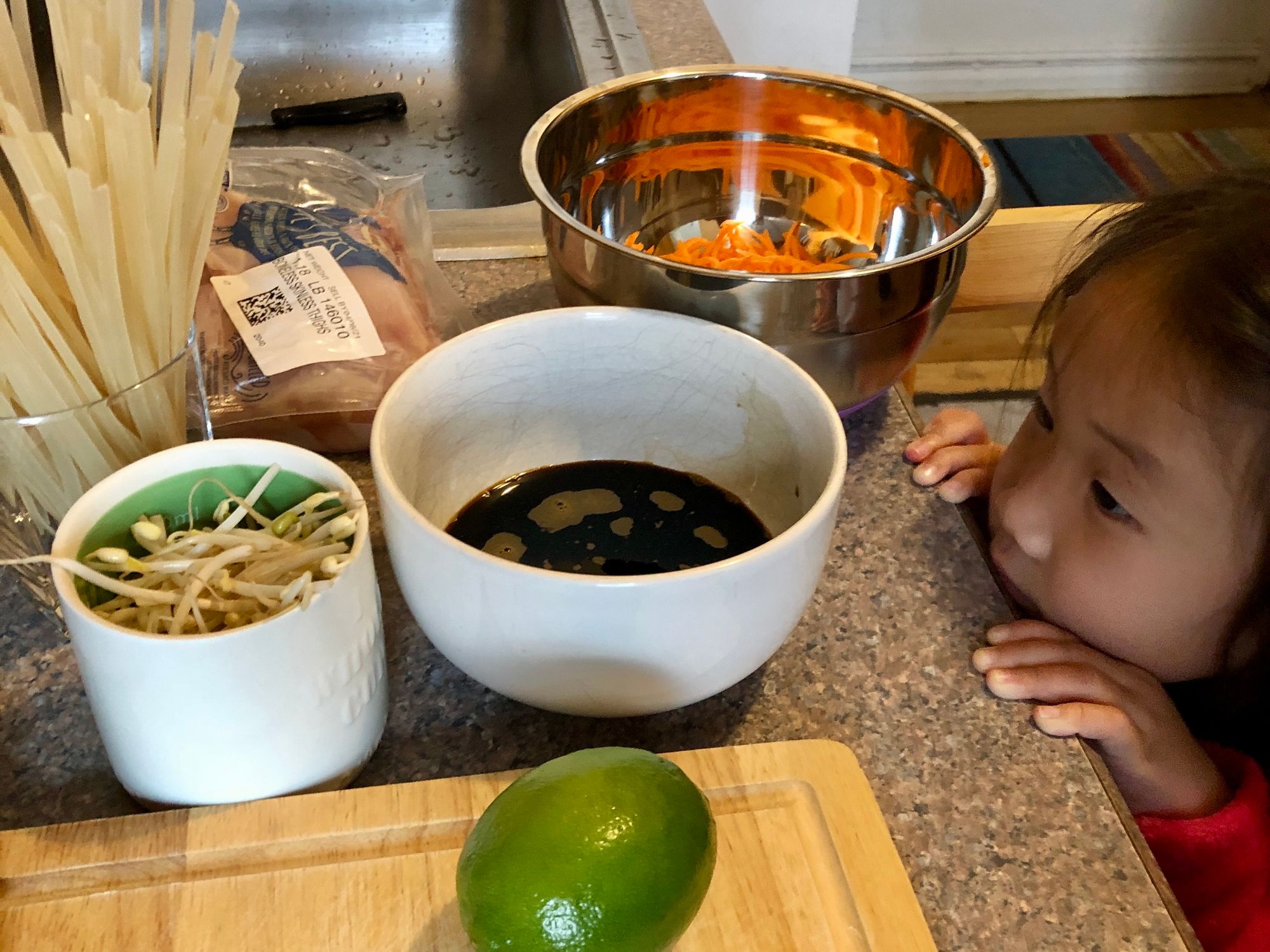The World of Smell and Taste Sensitivities in Children
Discover tips on navigating olfactory and gustatory sensitivities in kids. Understand triggers and find practical strategies to support your child's sensory journey.

Continuing our series for Sensory Processing Awareness month, in this article we'll talk about two closely linked senses, smell and taste. In previous articles, we touched on sound and touch sensitivity, shedding light on how our children experience the world around them. Now, let's dive into the delightful, and sometimes challenging, world of scents and flavors as we explore how to support children with unique olfactory and gustatory sensitivities.
✋ Touch Sensitivity
👂 Sound sensitivity
👁 Visual sensitivity
⭐️ Sensory Seekers & Undersensitivity
Sensitive Scenters
Kids can often have more delicate noses, compared to their grown-ups, but if they lose their cool in a big way when they encounter certain smells, they may have a hyperactive olfactory drive. Perfumes, colognes, cigarette smoke, and even strong food smells which are disagreeable to others can make someone with olfactory sensitivity feel nauseous, gag, or worse – lose their lunch. What's more, these scents can leave them feeling dysregulated: distracted, jittery, overwhelmed, and agitated, while others are able to ignore or get used to the smells.
How to Address Olfactory Sensitivity
- Acknowledge Their Sensitivities
If your little one gets upset or frustrated over certain smells, acknowledge their feelings and work together to find an appropriate response. The simple act of acknowledging and validating what your child is feeling can go a long way towards diminishing the negative feelings triggered by the environment. - Identify the Triggers
Start by pinpointing what scents set off these reactions in your child. When you cook and eat together or when you're out and about, pay attention to which foods or smells elicit those emotional responses. Once you know the culprits, you can work on minimizing their presence in your environment or providing support. - Fragrance-Free Zones
Make your home as fragrance-free as possible. This means ditching the strong perfumes and heavily scented cleaning products. Unscented soaps, shampoos, and lotions also have the added benefit of being better for sensitive skin and those with allergies. Open windows and keep rooms well-ventilated to help disperse any lingering odors.

- Out And About
In some situations, you have less control over the environment. Reducing exposure might mean temporarily leaving the room, distancing from the scent source, or employing calming techniques to alleviate the stress response. Putting on a well-fitted mask or having a trusty handkerchief or lovey on hand can also work wonders blocking out unwanted smells and providing some relief. - Desensitize Gradually: Gradually expose your child to different smells in small doses. Pay attention to their cues and reactions, and increase exposure as they become more comfortable.
- Get Creative with Scents: Make sensory exploration fun! Engage in games and activities that involve scents, like cotton balls with essential oils, scented candles, scratch-and-sniff stickers, scented crayons or markers, or even food and drinks.
- Talk About Scents: Incorporate discussions about scents into your daily routines. Put labels on various items and chat about the emotions or memories associated with them. Whether it's the smell of baking, fresh laundry, flowers, or crafting materials, make a point to notice and talk about the smells all around you. You might uncover scents that have a calming effect on your child. Consider keeping scented satchels or a scent jar handy to offer them when they need a bit of soothing during overwhelming moments.
Navigating Taste and Gustatory Sensitivity
Now, let's talk about our little gourmets and their unique taste and texture sensitivities. For some kids, certain foods can trigger intense reactions. They might be affected by hot or cold foods, particular textures (smooth or crunchy), specific flavors (too sweet, salty, or bold spices), or the unexpected combination of flavors.
If you've got a toddler who seems to be living on a steady diet of chicken nuggets, it's easy to feel a bit concerned. But it's important to understand that there's a distinction between a child who's testing boundaries and seeking control over their choices and a child who may be grappling with sensory processing issues.
Typically, toddlers can be picky eaters and have preferences, but they usually don't go to extremes when presented with new foods. On the flip side, children with gustatory sensory sensitivities might have strong reactions, like gagging, panicking, or even shedding tears, when confronted with certain foods or asked to try something unfamiliar.
Supporting Sensitive Tasters
- Keep a Close Eye on Food Reactions
Your child's reactions to food can be as unpredictable as the weather. Sometimes, a rough day at school or a night of poor sleep can affect their willingness to try new or less appealing foods. Keep a journal to monitor their food-related experiences. This will help you uncover patterns and anticipate tricky moments. - Taste and Smell: A Dynamic Duo
Taste and smell are like best buddies in the sensory world. While taste buds can detect the basics like salty, sweet, sour, and bitter, the real magic happens when the sense of smell joins the party. Understanding this connection can make a world of difference, especially if your child is sensitive to taste. Follow the tips above to reduce strong smell inputs when introducing foods.

- Taking it Slow and Exploring with Other Senses First
Introducing new tastes should be a gentle journey. Occupational therapists often start by letting kids observe and handle the food. Letting them participate in the cooking process is fantastic way to "get to know" new tastes. Once they've taken it in with their eyes and hands, they might move on to the "snake taste" phase – a quick lick to get familiar with the flavor. The goal is to work up from this to having the food sit on their tongue for about 10 seconds. Be patient; this process can take weeks or even months depending on the severity of the sensitivity. - Respect Their Limits
Set boundaries that everyone can agree on. If your child is comfortable with a "snake taste," don't push for them to swallow a bite, even if they find it okay. If you're aiming for one bite, don't insist on more. Showing empathy and understanding your child's challenges will help build trust and make mealtime a time of bonding, not battling.
This article contains affiliate links to products I feel good about endorsing, meaning I may earn commission from qualifying purchases. Check disclaimers for more info.
- Creative Food Presentations
Taste and texture sensitivities often go hand in hand. Switching up the form of a food can get you over a hurdle. For instance, if your child isn't a fan of the wet texture of fresh fruit, try chewy dried mango or apricot or crunchy freeze dried strawberries and banana chips, or a cool blended fruit smoothie. Experiment with roasted potatoes and vegetables if they don't like mashed or steamed varieties. For little ones, letting them cut new foods into fun shapes or into tiny bites with kid friendly food scissors can build their interest. Be prepared for a little trial and error – sometimes, the textures and tastes that work one day might not work the next.

- The Power of "Yet"
Don't overwhelm your child by introducing too many new foods at once. It can take 10 to 15 tries before they decide if they like a new food. When our sensitive eater takes the big step to try something new and declares, "I don't like it!" we are quick to add in, "You don't like it... YET" Pay attention to their reactions, and if something isn't a hit, try different forms of the same food before moving on to something new. With continued exposure and as they get older, their tastes may change! - Consult an Expert
Since taste sensitivity can lead to nutritional deficiencies, it's important to find the support you need to navigate a child's food sensitivities in a healthy way. Having an occupational therapist in your corner may be just what the doctor ordered.
Every child is wonderfully unique, and it's their special quirks and sensitivities that make them shine. We'd love to hear about your experiences and insights in supporting your child's sensory journey. What are some unique strategies or stories you've discovered while navigating these sensitivities with your little one? Share your thoughts and connect with our community, because your love, patience, and understanding are not only your greatest tools but also an inspiration to others!




Comments ()